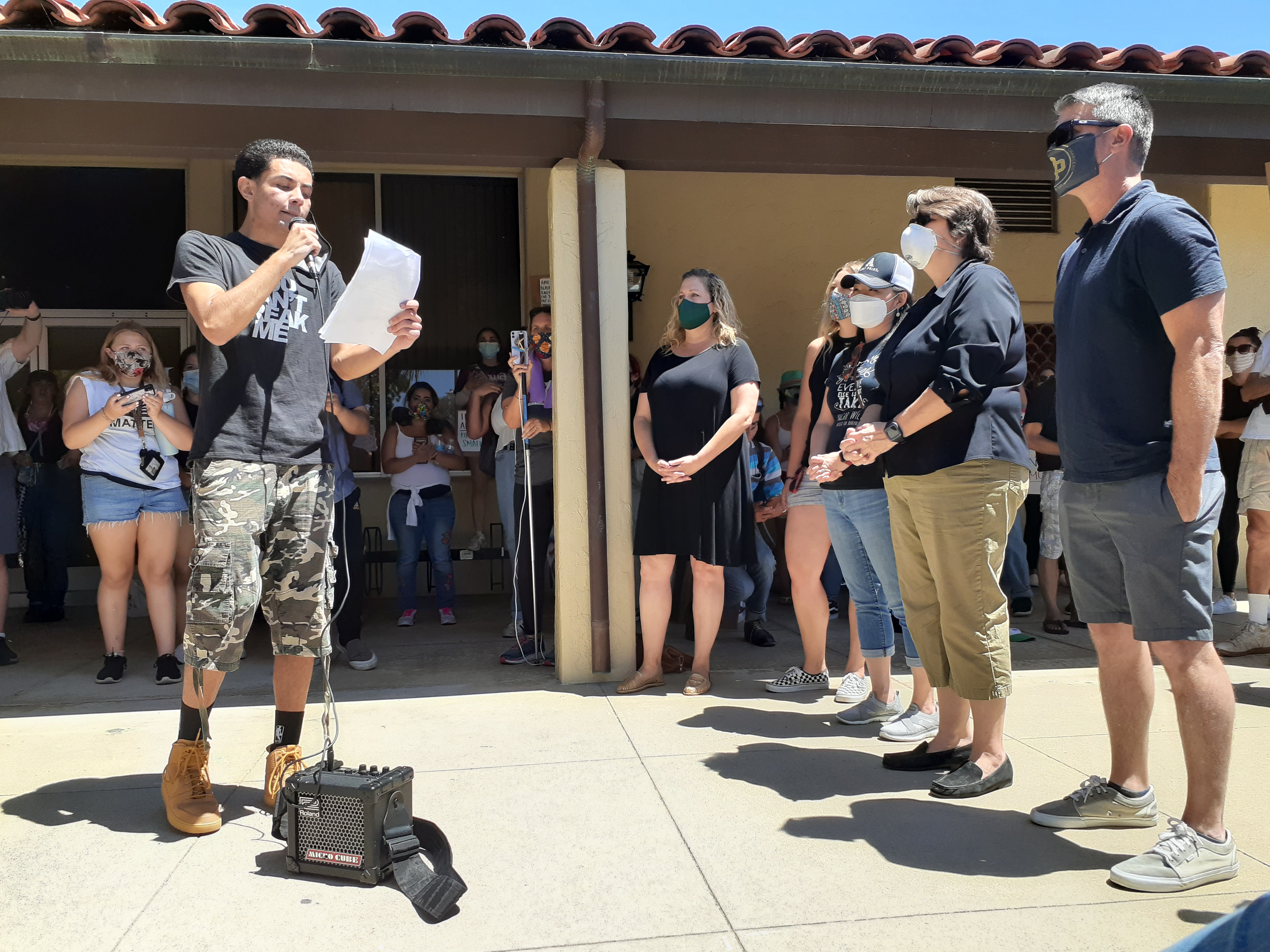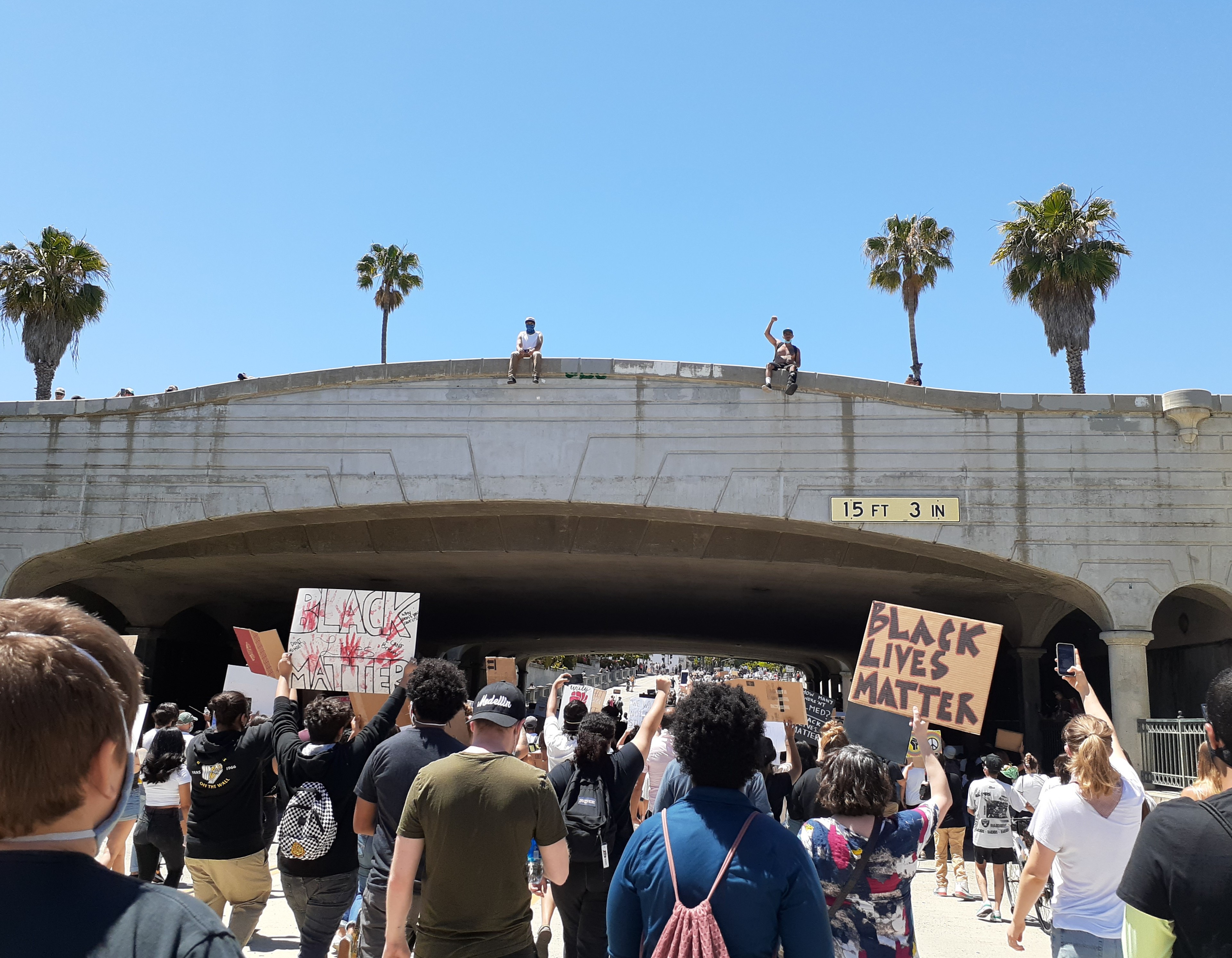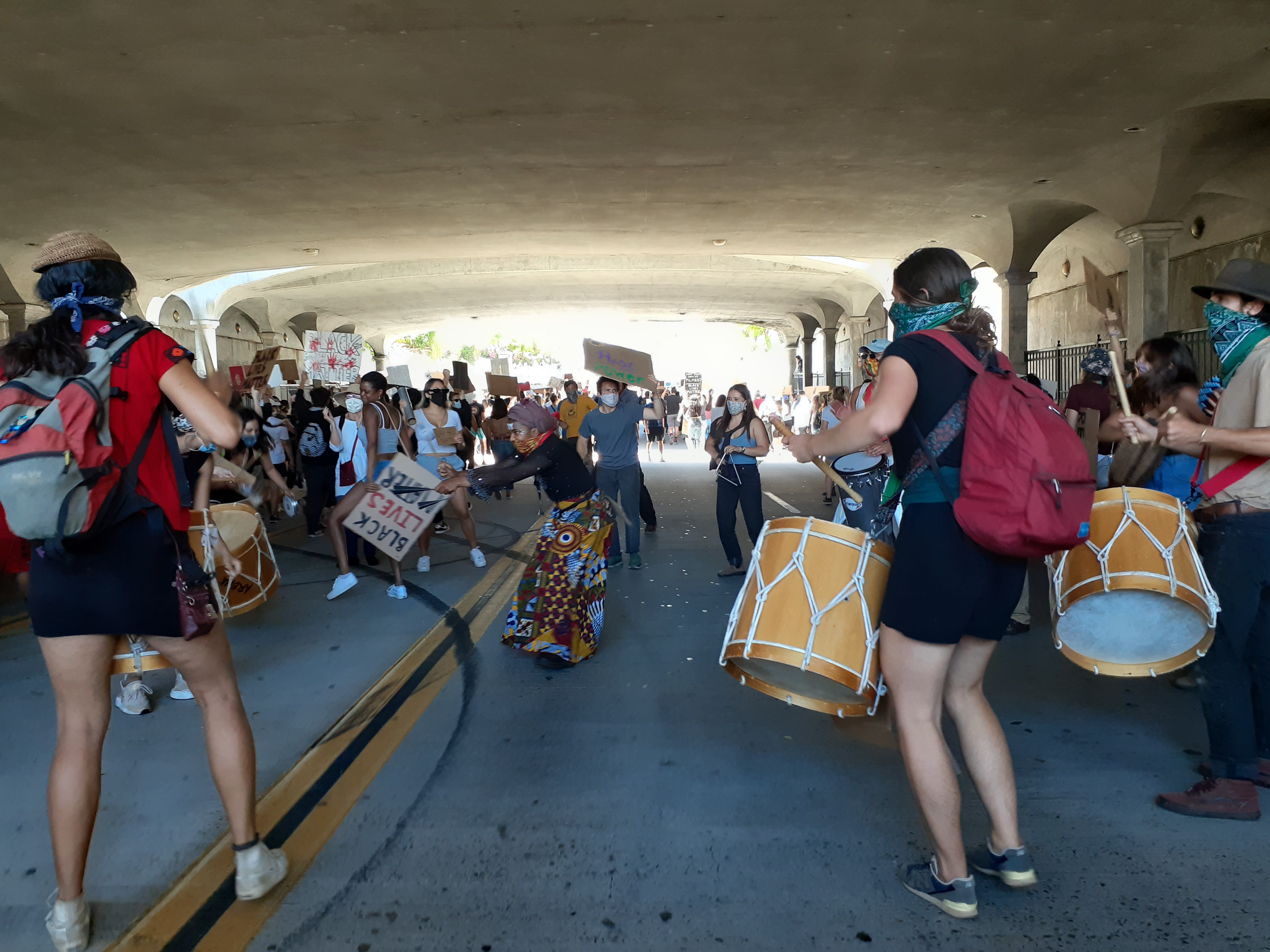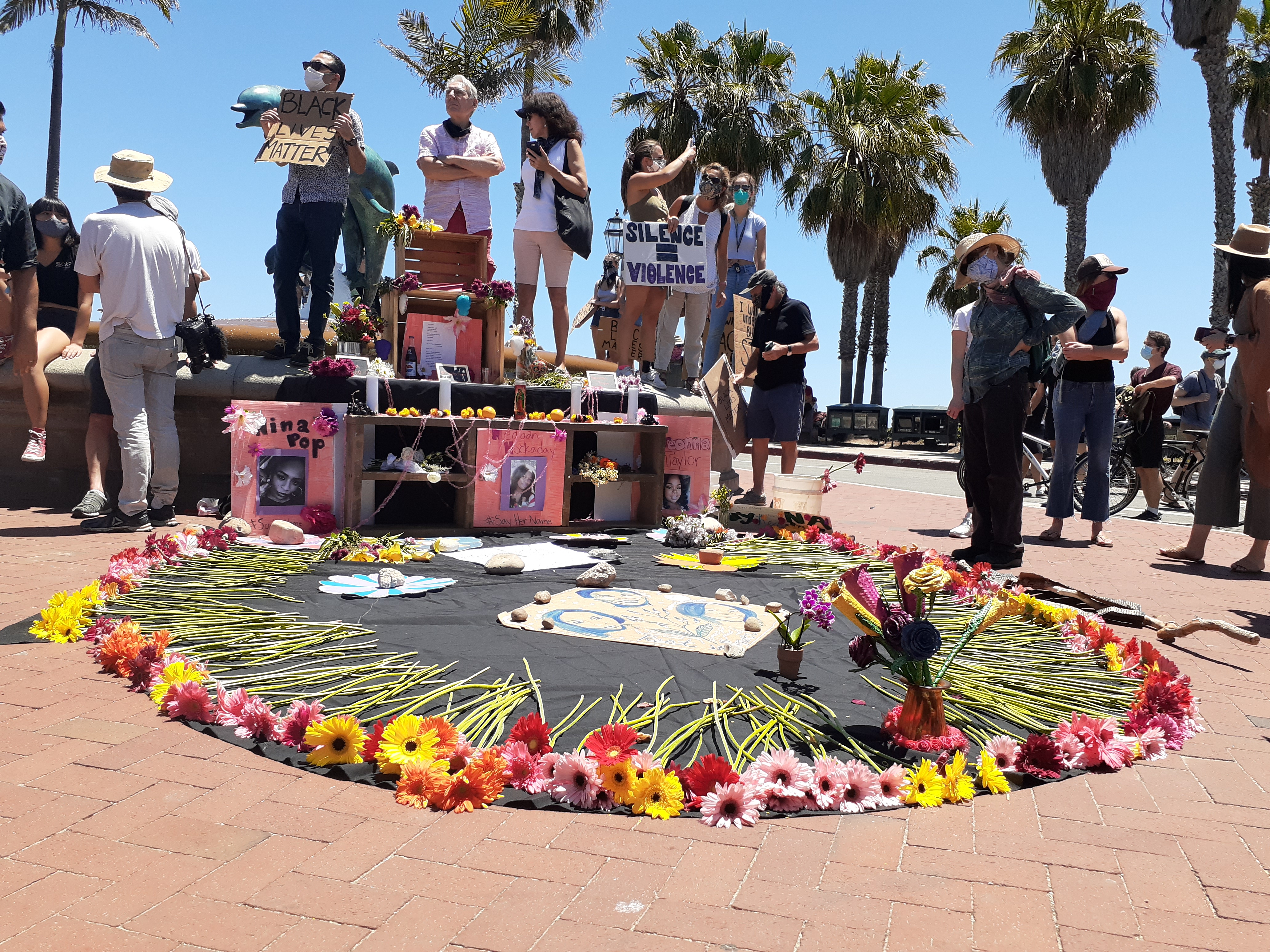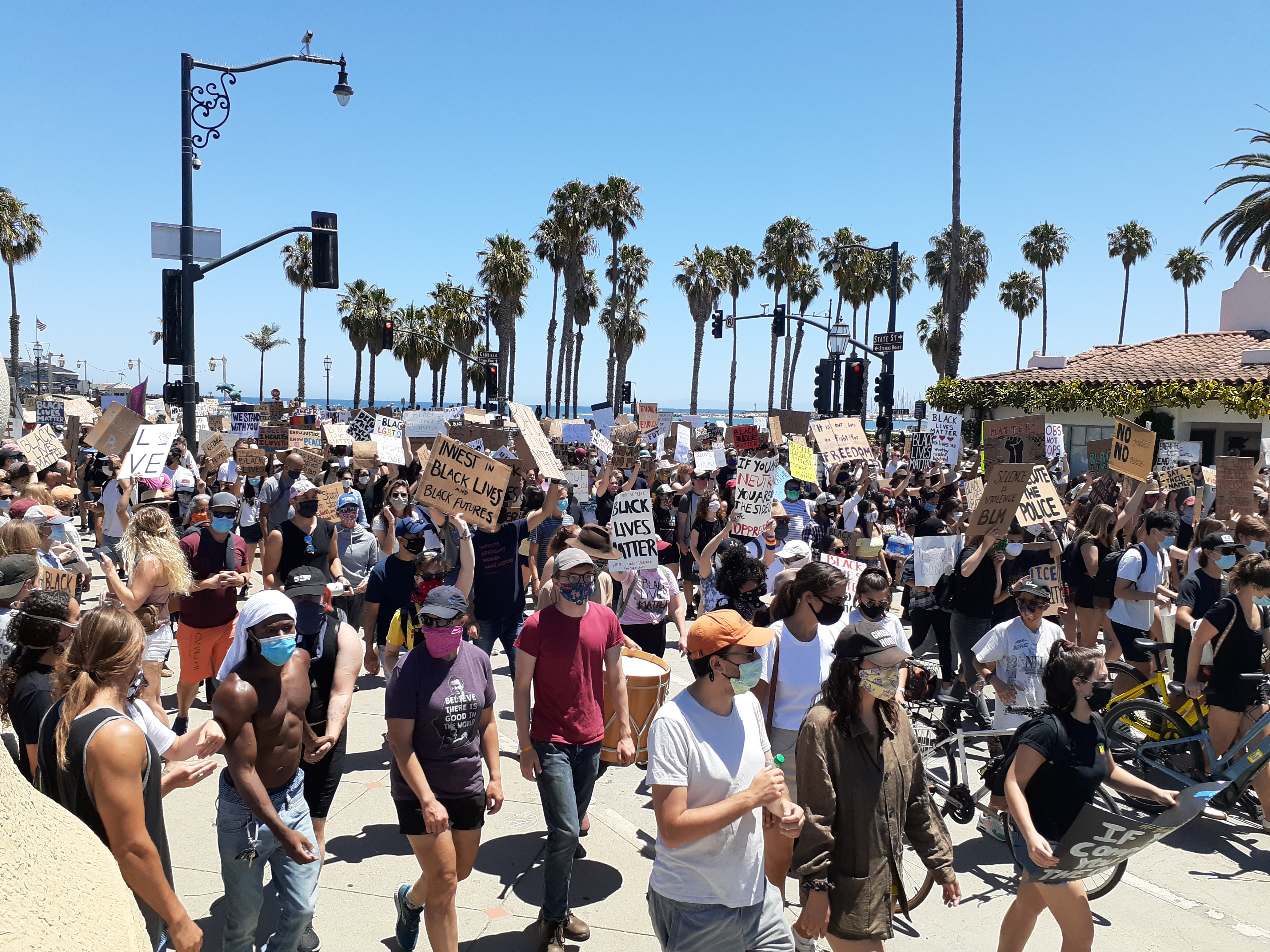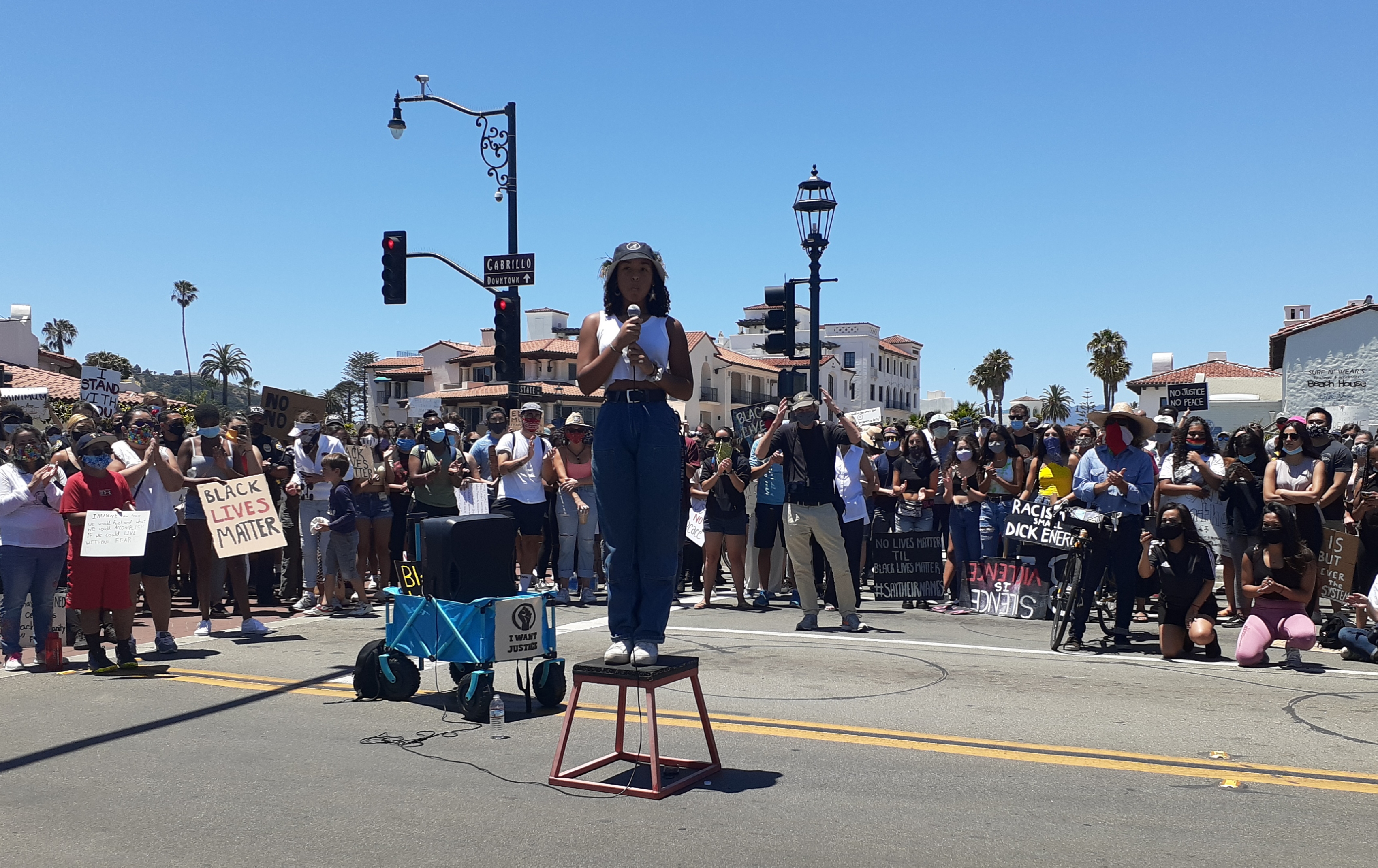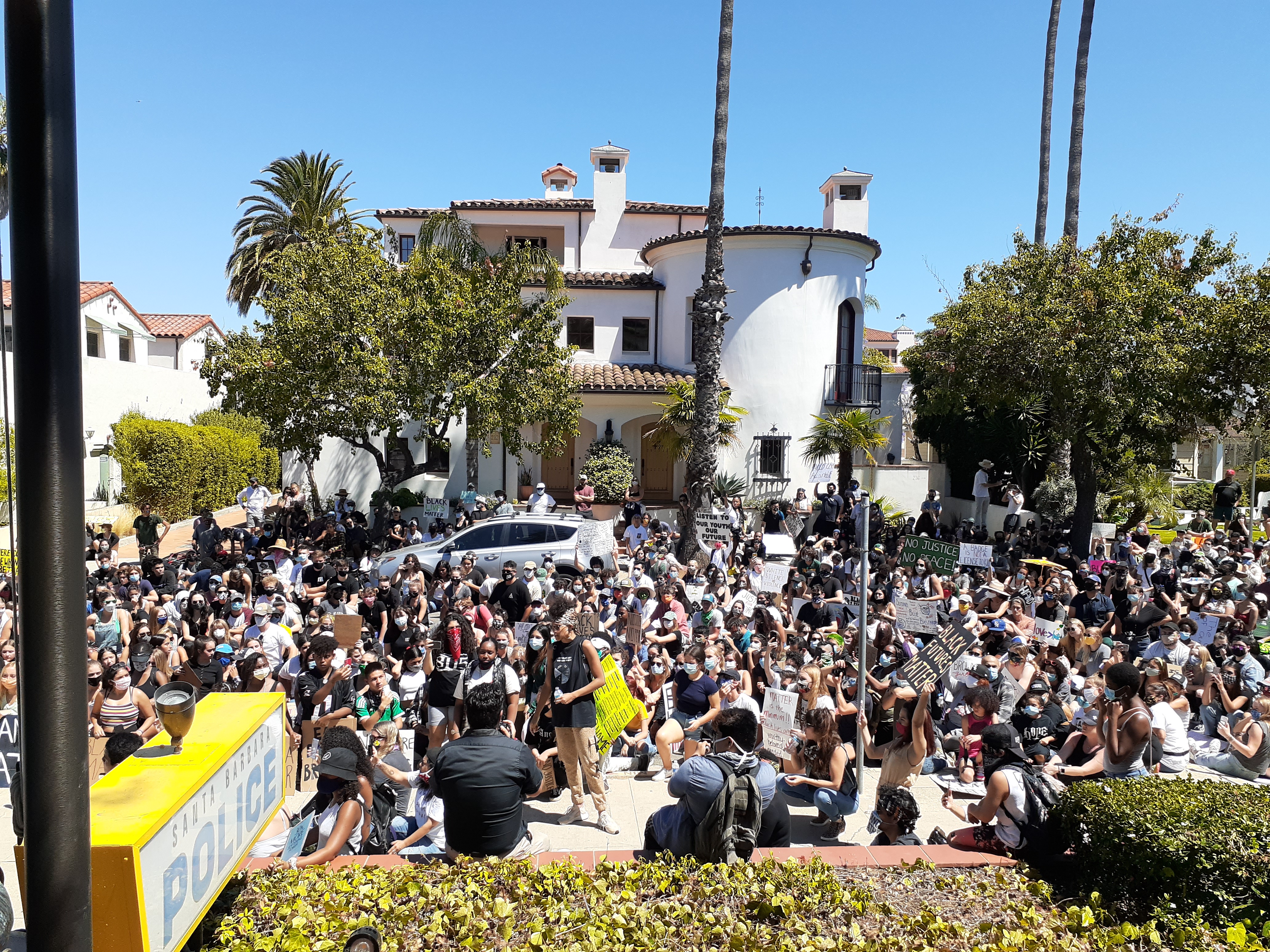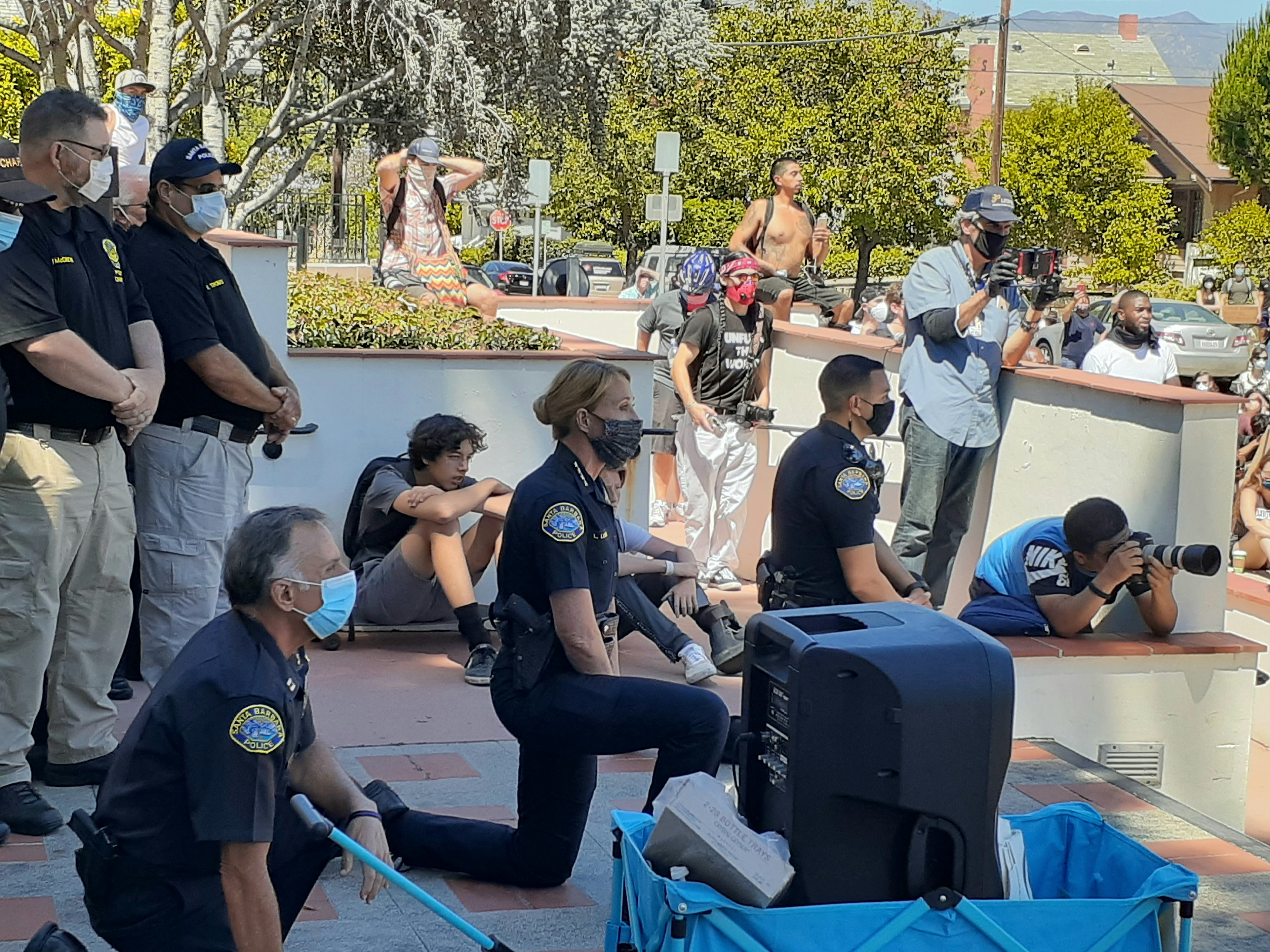Sunday’s Peaceful Protest Against Police Brutality Draws Thousands in Santa Barbara
Teens Organized Demonstration to Demand Changes from School District and Police
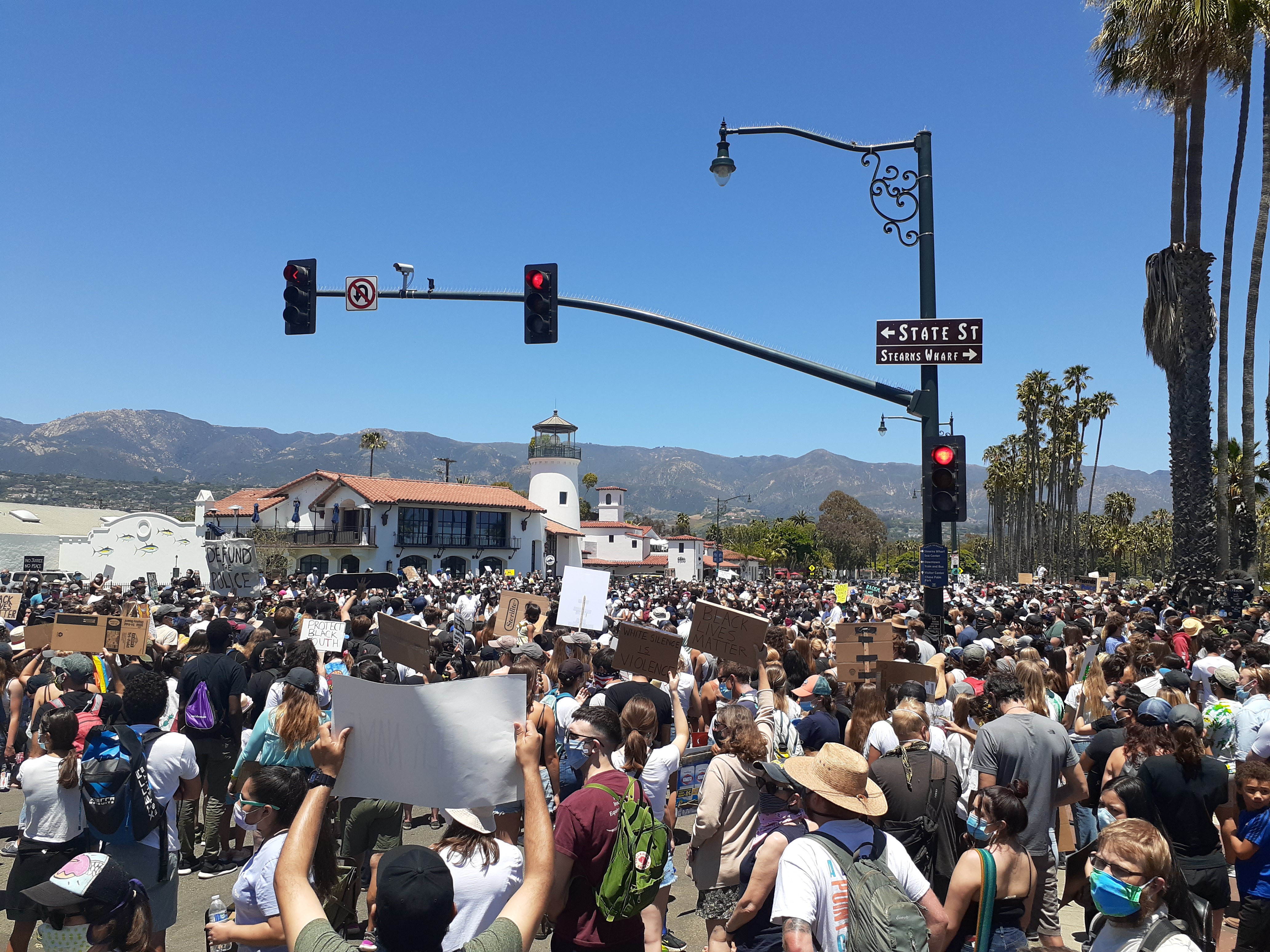
Santa Barbara teens led thousands of protesters in another peaceful march Sunday afternoon, walking from Stearns Wharf to the Santa Barbara Unified School District and then to the city’s Police Department, demanding the dismantling of racism.
“We know that there are things that need to be changed,” said Shakir Ahmad, a sophomore at San Marcos High School and one of the lead organizers of the event, outside the district office. “Therefore, we have a list of demands.”
The large crowd of several thousand demonstrators flooded around the school district building on Santa Barbara Street as Ahmad listed the six demands of the district, which include defunding any contracts between the district and the Sheriff’s Office or Police Department, implementing ethnic studies classes with culturally relevant curriculum, and adopting a resolution declaring racism as a public health emergency.
“I will not speak much because I am trying to practice opening my eyes and my ears and shutting my mouth,” said Frann Wageneck, the assistant superintendent of Student Services at the district. “I have heard your demands, and we will accept those demands and deliver them to the superintendent and the school board tomorrow morning. I take that back; we’ll deliver them tonight.”
Wageneck said she could not make any promises that the school board and superintendent would accept their demands, but she asked the students and protesters to watch the district’s actions.
The rally began Sunday afternoon with nearly two hours of song, dance, and speeches at the Stearns Wharf intersection. Though backed by the local Black Lives Matter chapter, the organizers on Sunday were members of local high school black student unions.
The mixed group of mainly young people, most wearing masks, marched to the school district to deliver their demands, and then on to Figueroa Street where they swarmed in front of the police station. They were met there with a starkly contrasting sight from what had greeted the Black Lives Matter protesters just one week before at the same location.
The shields, batons, and intimidating human police barricade were gone. The police chief herself, Lori Luhnow, was present this time and listened to the same demands Black Lives Matter S.B. delivered last week — only this time, she and the handful of sworn officers on either side of her took a knee. Mayor Cathy Murillo, who at the protest one week ago did not kneel, also took a knee in solidarity with the protesters on the sidewalk nearest to Santa Barbara Street in front of the police station.
“Four years ago, our officers hadn’t heard of 21st-century policing; they hadn’t heard of implicit bias, hadn’t heard of principled policing,” Luhnow said about the changes the department has made since she took over as chief in 2016. “They have worked closely with several different community groups, and all newly [sworn-in] officers sit down in an effort to speak with marginalized community members to create dialogue. And they do that before they even start the job on the streets.”
She said that the department is committed to developing citizen review and restorative practices within the department. Luhnow seemed to have the support of the crowd for most of her short talk, until she encouraged Ahmad and the other young people of color who organized the event to consider policing as a future career opportunity and a way for them to “change it from the inside,” which incited boos and forced her to conclude.
The protesters focused much of their speeches around not just police brutality against black people and other people of color, but also against Santa Barbara’s specific history of racism. Several protests that have emerged in the last week have had similar focuses, such as the petition to rename Santa Barbara’s historic restaurant Sambo’s, which quickly gained traction and success.
“Santa Barbara is a paradise; it’s a beautiful place to live,” said Lucas Flores-Piña, who just graduated from San Marcos High School. “But hidden behind this fraud of consumerism and tourism, Santa Barbara was built with racism on the backs of the native people. The mission is a monument to slavery. We need to wake up and stop glorifying and romanticizing the Old Spanish Days. They were rapists and conquerors.”
Flores-Piña said, through tears, that the movement to “wake up” in his own community has taken too long. He said that he is creating a local coalition of minorities now that he is out of high school and hopes to keep the school district, city, and police department accountable to the demands. His former classmate, Zenzelé Yossem-Guy, also recently graduated from San Marcos, gave a speech.
“You cannot bring me down; they cannot bring us down,” Yossem-Guy screamed to the crowd. “No matter what our race, no matter what our religious standing, we always can get back up as one. Thank you for giving me that.”

